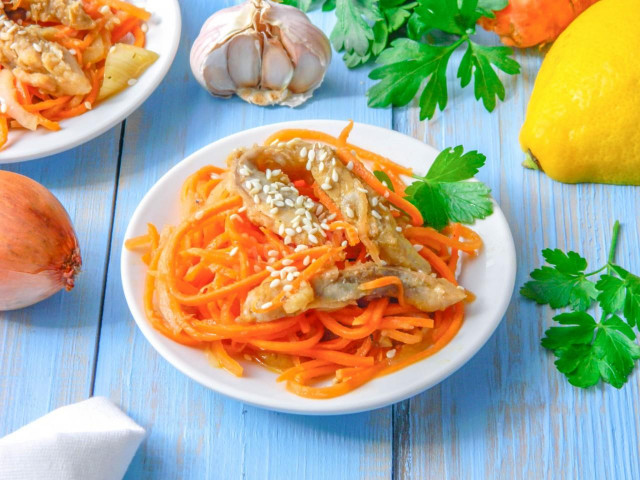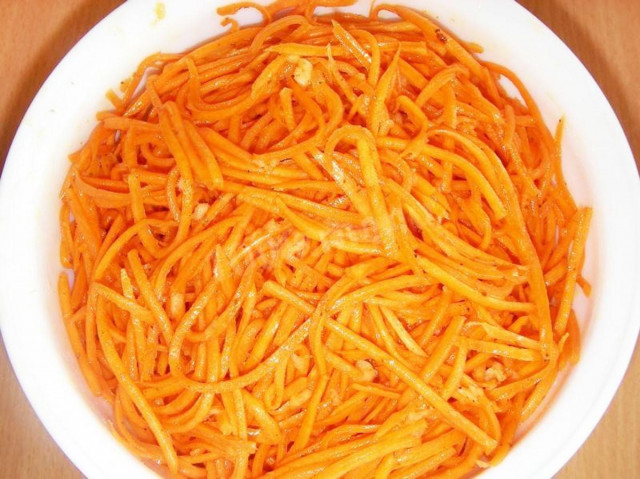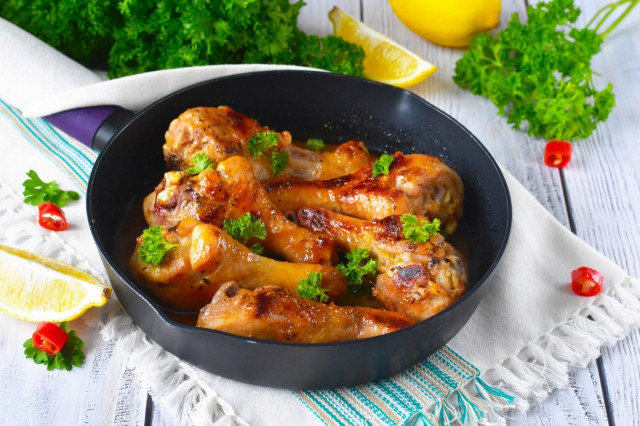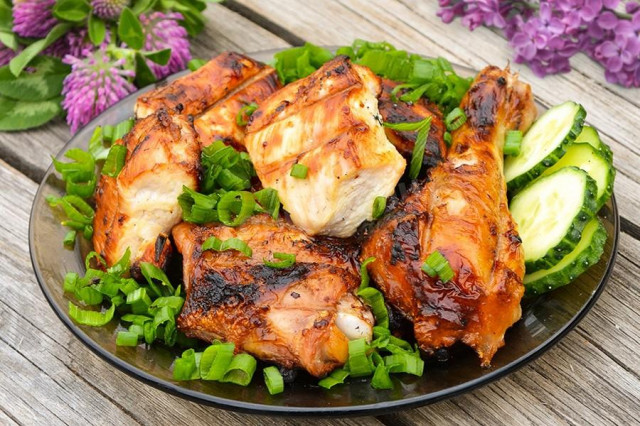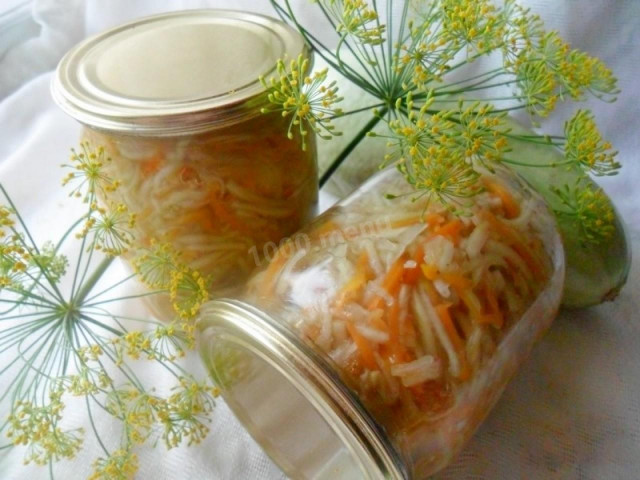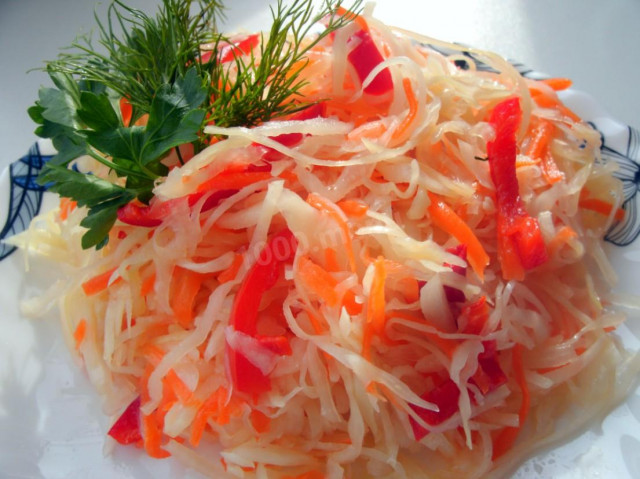Composition / ingredients
Step-by-step cooking
Step 1:
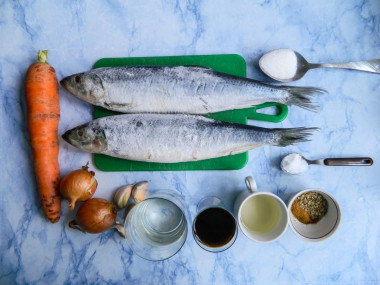
How to make herring hye in Korean? Prepare the ingredients. In addition to the spices specified in the recipe, you can take any at your discretion. Take a large onion or two small ones, carrots - medium. When choosing herring, make sure that the carcass is undamaged and there is not too much ice. It is better to buy fish with a head, because it is often cut off so that there are no signs of rotting. Sunflower or olive oil without smell is suitable.
Step 2:
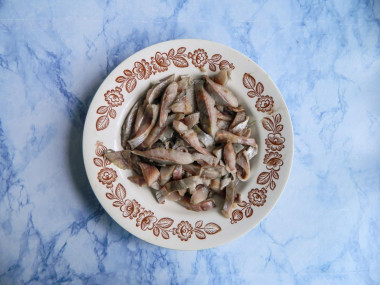
Prepare the herring. You can not defrost it in advance, but get it out of the freezer before cooking. Slightly frozen fish is easier to clean. Clean the entrails, remove the head, fins and all bones, rinse well in running water. Be sure to remove the dark film, it gives the fish bitterness. Cut into oblong thin pieces. Such slicing is considered traditional for this dish.
Step 3:
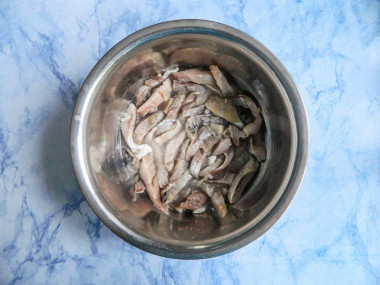
Place the sliced fish in a container that does not oxidize and is suitable for pickling. Enameled, ceramic and glassware are ideal. I took a deep stainless steel bowl. Pour vinegar over the herring and leave it under slight pressure for 10-15 minutes.
Step 4:
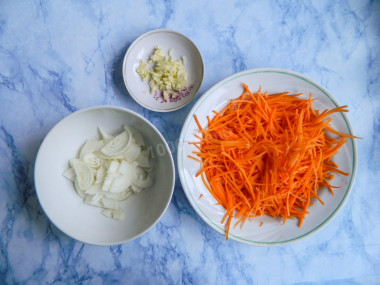
Peel and rinse carrots, onions and garlic. Grate the carrots on a grater for Korean carrots. If you do not have a special grater, cut with a sharp knife into long strips. Cut the onion into thin half-rings. In this form, it will marinate faster, retain its shape and remain juicy. Chop the garlic with a garlic chopper or grate it on a fine grater so that it gives off its flavor better.
Step 5:
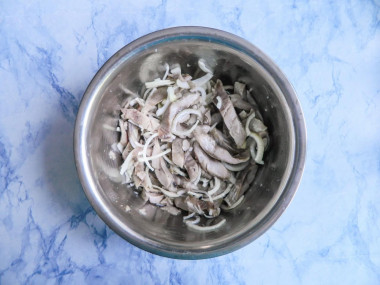
Drain half the vinegar from the herring. You won't need it anymore. Add the chopped onion to the herring and mix everything together.
Step 6:
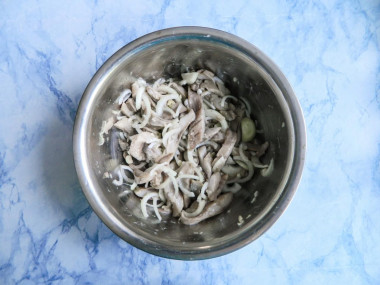
Add salt, sugar and garlic. Mix thoroughly so that the salt and sugar evenly disperse.
Step 7:
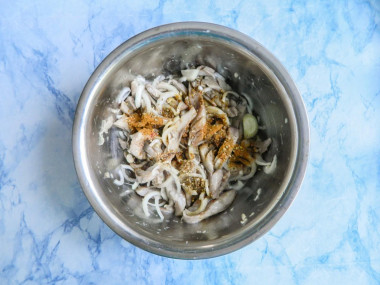
Add spices and soy sauce and mix again. If you use too salty soy sauce and a spice mixture that contains salt, add less salt than indicated in the recipe, or do not add at all.
Step 8:
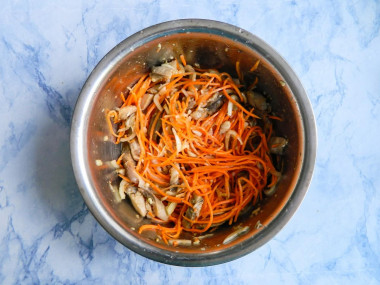
Add carrots and vegetable oil. Mix everything well again. Cover the bowl with a plate or tighten the film and leave to marinate for at least 6 hours. Serve the dish to the table chilled, you can sprinkle it with sesame seeds to taste. Bon appetit!
The most difficult thing in cooking herring he is cleaning the fish and removing the bones, because it is quite a bony fish. Therefore, to simplify the process, you can buy a ready-made herring fillet. The main thing is that it should be of good quality, so as not to spoil the taste of the finished dish.
The amount of spices and vinegar can be adjusted according to your own preferences. As a rule, someone likes it sharper, someone is sourer.
To my taste, according to this recipe, herring turns out to be very spicy. For myself, I reduce all the spices by about 2 times.
Since the degree of salinity, sweetness, bitterness, sharpness, acid, burning is individual for everyone, always add spices, spices and seasonings, focusing on your taste! If you put some of the seasonings for the first time, then keep in mind that there are spices that it is especially important not to shift (for example, chili pepper).
How to properly cut a whole fish into fillets? Remove the tail, head and fins. Cut the carcass along the spine to the spine. Turn it on its side. With a sharp knife, cut the meat from the backbone bone. Turn the carcass over and cut the fillet from the other side. Clean the inside by removing the black film, as it is bitter and will spoil the taste. Rinse and be sure to dry well.
When adding soy sauce to a dish, it is worth considering that it has a rather salty taste. Reduce the total amount of salt, otherwise you risk over-salting.
Caloric content of the products possible in the composition of the dish
- Carrots - 33 kcal/100g
- Dried carrots - 275 kcal/100g
- Boiled carrots - 25 kcal/100g
- Herring in vegetable oil - 301 kcal/100g
- Herring in sour cream - 97 kcal/100g
- Herring in tomato sauce - 159 kcal/100g
- Hot smoked herring - 215 kcal/100g
- Pickled herring - 192 kcal/100g
- Fresh herring - 161 kcal/100g
- Salted herring - 217 kcal/100g
- Garlic - 143 kcal/100g
- Soy sauce - 51 kcal/100g
- Granulated sugar - 398 kcal/100g
- Sugar - 398 kcal/100g
- Vegetable oil - 873 kcal/100g
- Dried whole sesame seeds - 563 kcal/100g
- Shelled sesame seed - 582 kcal/100g
- Salt - 0 kcal/100g
- Onion - 41 kcal/100g
- Spices dry - 240 kcal/100g
- Ground red pepper - 318 kcal/100g
- Table vinegar - 11 kcal/100g
- Ground coriander - 25 kcal/100g

